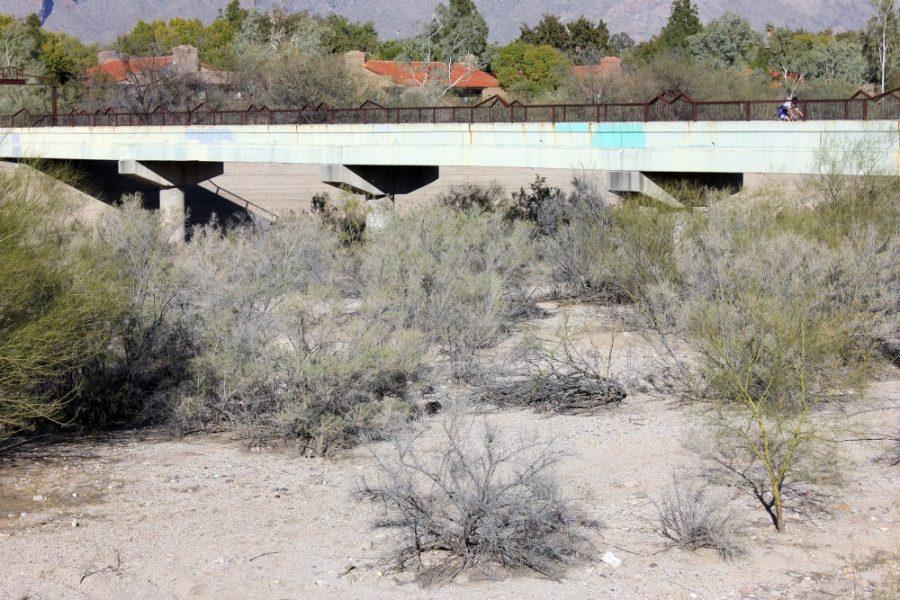There is a River Road in Tucson, but not an actual flowing river. For most of the year the Rillito River is a dried-up wash, only full for a short period of time after a monsoon storm. The diminishing water table is extremely important to the city, but sometimes scientific jargon makes it difficult for people to understand why they should care.
That’s where art comes in.
Art, poetry and other creative forms of communication provide a unique way to connect with scientific information, creating mass appeal for the often esoteric labors of scientific research.
“My work deals a lot with bringing science and art together,” said Ellen McMahon, a professor in the School of Art and editor of the book “Groundwater.”
“Groundwater” showcases environmental issues like water scarcity, climate change and diminishing biodiversity in Tucson’s riverbeds through different artistic projects.
“This project was great because we got to do a project with poets, geographers and biologists to look at local water issues,” McMahon said. It was a marriage between artists and scientists, and the artists were able to use the scientific information to tell the story without complicated charts and bar graphs, she added.
“It just makes for a fuller experience to talk across disciplines about things that matter to us,” McMahon said. Not everyone is a scientist, so if a person tells a story visually, the science can reach a broader audience.
Another individual molding art and science together is Eric Magrane, a graduate student in the School of Geography and Development. Magrane centers his poetry and other works around geopoetics and studies the merging of art and science.
“I go to poetry for a lot of the same reasons I go outside for ecology or to geography — they’re all about looking at relationships,” Magrane said.
He also writes a blog for the Institute of the Environment called “Proximities,” which focuses on art and the environment.
“Art helps us think through and relate with a space,” Magrane said.
Magrane said he feels that science and art have different ways of explaining the world. One is not more important than the other; we need both and other alternative ways to truly solve certain problems.
“It’s just as important to think about who we are and how we arrange the world as it is to think in a more traditional, scientific way. A lot of problems are compounded from a lack of imagination, and bringing creativity and out-of-the-box thinking into all disciplines can help us with ways forward, especially when facing environmental issues,” Magrane said.
Diana Liverman, co-director of the Institute of the Environment, said she feels that “art reaches a different group of people.”
The Institute of the Environment supports interdisciplinary environmental research and the blog “Proximities,” so promoting art and science is a part of its work.
Liverman said that art might help to reach people and show them the importance of issues like climate change.
“Artists raise awareness in different ways, and they can reach different audiences,” Liverman said.



